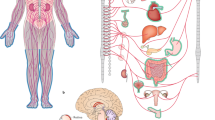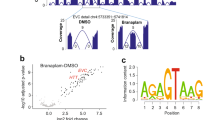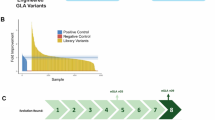Abstract
Transthyretin (TTR) is a tetrameric protein synthesized mostly by the liver and secreted into the plasma. TTR molecules can misfold and form amyloid fibrils in the heart and peripheral nerves, either as a result of gene variants in TTR or as an ageing-related phenomenon, which can lead to amyloid TTR (ATTR) amyloidosis. Some of the proposed strategies to treat ATTR amyloidosis include blocking TTR synthesis in the liver, stabilizing TTR tetramers or disrupting TTR fibrils. Small interfering RNA (siRNA) or antisense oligonucleotide (ASO) technologies have been shown to be highly effective for the blockade of TTR expression in the liver in humans. The siRNA patisiran and the ASO inotersen have been approved for the treatment of patients with ATTR variant polyneuropathy, regardless of the presence and severity of ATTR cardiomyopathy. Preliminary data show that therapy with patisiran improves the cardiac phenotype rather than only inducing disease stabilization in patients with ATTR variant polyneuropathy and concomitant ATTR cardiomyopathy, and this drug is being evaluated in a phase III clinical trial in patients with ATTR cardiomyopathy. Furthermore, ongoing phase III clinical trials will evaluate another siRNA, vutrisiran, and a novel ASO formulation, eplontersen, in patients with ATTR variant polyneuropathy or ATTR cardiomyopathy. In this Review, we discuss these approaches for TTR silencing in the treatment of ATTR amyloidosis as well as the latest strategy of genome editing with CRISPR–Cas9 to reduce TTR gene expression.
Key points
-
Transthyretin (TTR) is a tetrametric protein synthesized mainly by the liver that can misfold and deposit as amyloid fibrils, predominantly in peripheral nerves and the heart, which can result in amyloid TTR (ATTR) amyloidosis.
-
Therapeutic options for ATTR amyloidosis include pharmacological agents that inhibit hepatic synthesis of TTR, stabilize the tetramer or disrupt the amyloid fibrils.
-
The small interfering RNA (siRNA) patisiran and the antisense oligonucleotide (ASO) inotersen block liver TTR expression and have been approved for the treatment of variant ATTR polyneuropathy (ATTRv-PN).
-
Phase III trials are ongoing on patisiran for the treatment of ATTR cardiomyopathy (ATTR-CM) and the siRNA vutrisiran for hereditary ATTRv-PN or ATTR-CM.
-
A novel ASO formulation, eplontersen, is being evaluated in phase III trials in patients with ATTRv-PN or ATTR-CM.
-
A genome editing strategy using CRISPR–Cas9 to silence the TTR gene is being investigated in a phase I trial.
This is a preview of subscription content, access via your institution
Access options
Access Nature and 54 other Nature Portfolio journals
Get Nature+, our best-value online-access subscription
$29.99 / 30 days
cancel any time
Subscribe to this journal
Receive 12 print issues and online access
$209.00 per year
only $17.42 per issue
Buy this article
- Purchase on Springer Link
- Instant access to full article PDF
Prices may be subject to local taxes which are calculated during checkout

Similar content being viewed by others
References
Benson, M. D. et al. Amyloid nomenclature 2020: update and recommendations by the International Society of Amyloidosis (ISA) nomenclature committee. Amyloid 27, 217–222 (2020).
Ruberg, F. L., Grogan, M., Hanna, M., Kelly, J. W. & Maurer, M. S. Transthyretin amyloid cardiomyopathy: JACC state-of-the-art review. J. Am. Coll. Cardiol. 73, 2872–2891 (2019).
Vieira, M. & Saraiva, M. J. Transthyretin: a multifaceted protein. Biomol. Concepts 5, 45–54 (2014).
Kelly, J. W. Alternative conformations of amyloidogenic proteins govern their behavior. Curr. Opin. Struct. Biol. 6, 11–17 (1996).
Kelly, J. W. et al. Transthyretin quaternary and tertiary structural changes facilitate misassembly into amyloid. Adv. Protein Chem. 50, 161–181 (1997).
Mangione, P. P. et al. Proteolytic cleavage of Ser52Pro variant transthyretin triggers its amyloid fibrillogenesis. Proc. Natl Acad. Sci. USA 111, 1539–1544 (2014).
Griffin, J. M., Rosenblum, H. & Maurer, M. S. Pathophysiology and therapeutic approaches to cardiac amyloidosis. Circ. Res. 128, 1554–1575 (2021).
Niraula, T. N. et al. Decreased thermodynamic stability as a crucial factor for familial amyloidotic polyneuropathy. J. Mol. Biol. 320, 333–342 (2002).
Almeida, M. R., Damas, A. M., Lans, M. C., Brouwer, A. & Saraiva, M. J. Thyroxine binding to transthyretin Met 119: comparative studies of different heterozygotic carriers and structural analysis. Endocrine 6, 309–315 (1997).
Ruberg, F. L. & Berk, J. L. Transthyretin (TTR) cardiac amyloidosis. Circulation 126, 1286–1300 (2012).
Maurer, M. S. et al. Expert consensus recommendations for the suspicion and diagnosis of transthyretin cardiac amyloidosis. Circ. Heart Fail. 12, e006075 (2019).
Adams, D., Koike, H., Slama, M. & Coelho, T. Hereditary transthyretin amyloidosis: a model of medical progress for a fatal disease. Nat. Rev. Neurol. 15, 387–404 (2019).
Mariani, L. L. et al. Genotype-phenotype correlation and course of transthyretin familial amyloid polyneuropathies in France. Ann. Neurol. 78, 901–916 (2015).
Koike, H. et al. Natural history of transthyretin Val30Met familial amyloid polyneuropathy: analysis of late-onset cases from non-endemic areas. J. Neurol. Neurosurg. Psych. 83, 152–158 (2012).
Li, B., Alvir, J. & Stewart, M. Extrapolation of survival benefits in patients with transthyretin amyloid cardiomyopathy receiving tafamidis: analysis of the Tafamidis in Transthyretin Cardiomyopathy Clinical Trial. Cardiol. Ther. 9, 535–540 (2020).
Holmgren, G. et al. Biochemical effect of liver transplantation in two Swedish patients with familial amyloidotic polyneuropathy (FAP-met30). Clin. Genet. 40, 242–246 (1991).
Ericzon, B. G. et al. Liver transplantation for hereditary transthyretin amyloidosis: after 20 years still the best therapeutic alternative? Transplantation 99, 1847–1854 (2015).
Liepnieks, J. J., Zhang, L. Q. & Benson, M. D. Progression of transthyretin amyloid neuropathy after liver transplantation. Neurology 75, 324–327 (2010).
Okamoto, S. et al. Development of cardiomyopathy after liver transplantation in Swedish hereditary transthyretin amyloidosis (ATTR) patients. Amyloid 18, 200–205 (2011).
Emdin, M. et al. Treatment of cardiac transthyretin amyloidosis: an update. Eur. Heart J. 40, 3699–3706 (2019).
Coelho, T. et al. Tafamidis for transthyretin familial amyloid polyneuropathy: a randomized, controlled trial. Neurology 79, 785–792 (2012).
Lozeron, P. et al. Effect on disability and safety of tafamidis in late onset of Met30 transthyretin familial amyloid polyneuropathy. Eur. J. Neurol. 20, 1539–1545 (2013).
Planté-Bordeneuve, V. et al. Long-term treatment of transthyretin familial amyloid polyneuropathy with tafamidis: a clinical and neurophysiological study. J. Neurol. 264, 268–276 (2017).
Cortese, A. et al. Monitoring effectiveness and safety of tafamidis in transthyretin amyloidosis in Italy: a longitudinal multicenter study in a non-endemic area. J. Neurol. 263, 916–924 (2016).
Maurer, M. S. et al. Tafamidis treatment for patients with transthyretin amyloid cardiomyopathy. N. Engl. J. Med. 379, 1007–1016 (2018).
Solomon, S. D. et al. Effects of patisiran, an RNA interference therapeutic, on cardiac parameters in patients with hereditary transthyretin-mediated amyloidosis. Circulation 139, 431–443 (2019).
US National Library of Medicine. ClinicalTrials.gov http://www.clinicaltrials.gov/ct2/show/NCT03997383 (2022).
US National Library of Medicine. ClinicalTrials.gov http://www.clinicaltrials.gov/ct2/show/NCT03759379 (2022).
US National Library of Medicine. ClinicalTrials.gov http://www.clinicaltrials.gov/ct2/show/NCT04153149 (2022).
Viney, N. J. et al. Ligand conjugated antisense oligonucleotide for the treatment of transthyretin amyloidosis: preclinical and phase 1 data. ESC Heart Fail. 8, 652–661 (2021).
US National Library of Medicine. ClinicalTrials.gov http://www.clinicaltrials.gov/ct2/show/NCT04136184 (2021).
US National Library of Medicine. ClinicalTrials.gov http://www.clinicaltrials.gov/ct2/show/NCT04136171 (2022).
Gillmore, J. D. et al. CRISPR-Cas9 in vivo gene editing for transthyretin amyloidosis. N. Engl. J. Med. 385, 493–502 (2021).
Caplen, N. J. & Mousses, S. Short interfering RNA (siRNA)-mediated RNA interference (RNAi) in human cells. Ann. NY Acad. Sci. 1002, 56–62 (2003).
Hu, B. et al. Therapeutic siRNA: state of the art. Signal Transduct. Target. Ther. 5, 101 (2020).
Whitehead, K. A., Langer, R. & Anderson, D. G. Knocking down barriers: advances in siRNA delivery. Nat. Rev. Drug Discov. 8, 129–138 (2009).
Dong, Y., Siegwart, D. J. & Anderson, D. G. Strategies, design, and chemistry in siRNA delivery systems. Adv. Drug Deliv. Rev. 144, 133–147 (2019).
Dana, H. et al. Molecular mechanisms and biological functions of siRNA. Int. J. Biomed. Sci. 13, 48–57 (2017).
Setten, R. L., Rossi, J. J. & Han, S. P. The current state and future directions of RNAi-based therapeutics. Nat. Rev. Drug Discov. 18, 421–446 (2019).
Khorev, O., Stokmaier, D., Schwardt, O., Cutting, B. & Ernst, B. Trivalent, Gal/GalNAc-containing ligands designed for the asialoglycoprotein receptor. Bioorg. Med. Chem. 16, 5216–5231 (2008).
Pasi, K. J. et al. Targeting of antithrombin in hemophilia A or B with RNAi therapy. N. Engl. J. Med. 377, 819–828 (2017).
Kamerkar, S. et al. Exosomes facilitate therapeutic targeting of oncogenic KRAS in pancreatic cancer. Nature 546, 498–503 (2017).
Triozzi, P. et al. Phase I clinical trial of adoptive cellular immunotherapy with APN401 in patients with solid tumors. J. Immunother. Cancer 3, P175–P175 (2015).
Flisiak, R., Jaroszewicz, J. & Łucejko, M. siRNA drug development against hepatitis B virus infection. Expert Opin. Biol. Ther. 18, 609–617 (2017).
Benitez-Del-Castillo, J. M. et al. Safety and Efficacy clinical trials for SYL1001, a novel short interfering RNA for the treatment of dry eye disease. Invest. Ophtalmol. Vis. Sci. 57, 6447–6454 (2016).
Moreno-Montañés, J. et al. Phase I clinical trial of SYL040012, a small interfering RNA targeting β-adrenergic receptor 2, for lowering intraocular pressure. Mol. Ther. 22, 226–232 (2014).
Martínez, T. et al. In vitro and in vivo efficacy of SYL040012, a novel siRNA compound for treatment of glaucoma. Mol. Ther. 22, 81–91 (2014).
Liebow, A. et al. An investigational RNAi therapeutic targeting glycolate oxidase reduces oxalate production in models of primary hyperoxaluria. J. Am. Soc. Nephrol. 28, 494–503 (2017).
Seto, A. G. et al. Cobomarsen, an oligonucleotide inhibitor of miR-155, co-ordinately regulates multiple survival pathways to reduce cellular proliferation and survival in cutaneous T-cell lymphoma. Br. J. Haematol. 183, 428–444 (2018).
Pham, T. P., Kremer, V. & Boon, R. A. RNA-based therapeutics in cardiovascular disease. Curr. Opin. Cardiol. 35, 191–198 (2020).
Uijl, E. et al. Strong and sustained antihypertensive effect of small interfering RNA targeting liver angiotensinogen. Hypertension 73, 1249–1257 (2019).
Borrelli, M. J., Youssef, A., Boffa, M. B. & Koschinsky, M. L. New frontiers in Lp(a)-targeted therapies. Trends Pharmacol. Sci. 40, 212–225 (2019).
Melquist, S. et al. Abstract 17167: targeting apolipoprotein(a) with a novel rnai delivery platform as a prophylactic treatment to reduce risk of cardiovascular events in individuals with elevated lipoprotein (a). Circulation 134, A17167–A17167 (2016).
US Food and Drug Administration. Onpattro (patisiran) labeling-package insert. FDA https://www.accessdata.fda.gov/scripts/cder/daf/index.cfm?event=overview.process&ApplNo=210922 (2021).
Coelho, T. et al. Safety and efficacy of RNAi therapy for transthyretin amyloidosis. N. Engl. J. Med. 369, 819–829 (2013).
Suhr, O. B. et al. Efficacy and safety of patisiran for familial amyloidotic polyneuropathy: a phase II multi-dose study. Orphanet J. Rare Dis. 10, 109 (2015).
Coelho, T. et al. A phase II, open-label, extension study of long-term patisiran treatment in patients with hereditary transthyretin-mediated (hATTR) amyloidosis. Orphanet J. Rare Dis. 15, 179 (2020).
Adams, D. et al. Patisiran, an RNAi therapeutic, for hereditary transthyretin amyloidosis. N. Engl. J. Med. 379, 11–21 (2018).
Adams, D. et al. Long-term safety and efficacy of patisiran for hereditary transthyretin-mediated amyloidosis with polyneuropathy: 12-month results of an open-label extension study. Lancet Neurol. 20, 49–59 (2021).
Fontana, M. et al. Reduction in CMR derived extracellular volume with patisiran indicates cardiac amyloid regression. JACC Cardiovasc. Imaging 14, 189–199 (2021).
European Medicines Agency. Onpattro. EMA https://www.ema.europa.eu/en/medicines/human/EPAR/onpattro (2022).
Zimmermann, T. S. et al. Clinical proof of concept for a novel hepatocyte-targeting GalNAc-siRNA conjugate. Mol. Ther. 25, 71–78 (2017).
Judge, D. P. et al. Phase 3 multicenter study of revusiran in patients with hereditary transthyretin-mediated (hATTR) amyloidosis with cardiomyopathy (ENDEAVOUR). Cardiovasc. Drug Ther. 34, 357–370 (2020).
Habtemariam, B. A. et al. Single-dose pharmacokinetics and pharmacodynamics of transthyretin targeting N-acetylgalactosamine-small interfering ribonucleic acid conjugate, vutrisiran, in healthy subjects. Clin. Pharmacol. Ther. 109, 372–382 (2021).
Springer, A. D. & Dowdy, S. F. GalNAc-siRNA conjugates: leading the way for delivery of RNAi therapeutics. Nucleic Acid Ther. 28, 109–118 (2018).
Adams, D. et al. HELIOS-A: 9-month results from the phase 3 study of vutrisiran in patients with hereditary transthyretin-mediated amyloidosis with polyneuropathy. Presented at American Academy of Neurology Congress (2021).
US National Library of Medicine. ClinicalTrials.gov http://www.clinicaltrials.gov/ct2/show/NCT04153149 (2022).
Alnylam Pharmaceuticals. Alnylam completes enrollment in HELIOS-B phase 3 study of investigational vutrisiran in patients with transthyretin-mediated (ATTR) amyloidosis with cardiomyopathy. Business Wire https://www.businesswire.com/news/home/20210809005231/en/Alnylam-Completes-Enrollment-in-HELIOS-B-Phase-3-Study-of-Investigational-Vutrisiran-in-Patients-with-Transthyretin-Mediated-ATTR-Amyloidosis-with-Cardiomyopathy (2021).
Hayashi, Y. & Jono, H. Recent advances in oligonucleotide-based therapy for transthyretin amyloidosis: clinical impact and future prospects. Biol. Pharm. Bull. 41, 1737–1744 (2018).
US Food and Drug Administration. Tegsedi (inotersen) labeling-medication guide. FDA https://www.accessdata.fda.gov/scripts/cder/daf/index.cfm?event=overview.process&ApplNo=211172 (2020).
Ackermann, E. J. et al. Suppressing transthyretin production in mice, monkeys and humans using 2nd-generation antisense oligonucleotides. Amyloid 23, 148–157 (2016).
US National Library of Medicine. ClinicalTrials.gov http://www.clinicaltrials.gov/ct2/show/NCT03702829 (2020).
Benson, M. D. et al. Inotersen treatment for patients with hereditary transthyretin amyloidosis. N. Engl. J. Med. 379, 22–31 (2018).
European Medicines Agency. Tegsedi. EMA https://www.ema.europa.eu/en/medicines/human/EPAR/tegsedi#authorisation-details-section (2021).
US National Library of Medicine. ClinicalTrials.gov http://www.clinicaltrials.gov/ct2/show/NCT04843020 (2021).
US National Library of Medicine. ClinicalTrials.gov http://www.clinicaltrials.gov/ct2/show/NCT04136184 (2021).
US National Library of Medicine. ClinicalTrials.gov http://www.clinicaltrials.gov/ct2/show/NCT04136171 (2022).
Li, H. et al. Applications of genome editing technology in the targeted therapy of human diseases: mechanisms, advances and prospects. Signal Transduct. Target. Ther. 5, 1 (2020).
Finn, J. D. et al. A single administration of CRISPR/Cas9 lipid nanoparticles achieves robust and persistent in vivo genome editing. Cell Rep. 22, 2227–2235 (2018).
Maurer, M. S. Gene editing - a cure for transthyretin amyloidosis? N. Engl. J. Med. 385, 558–559 (2021).
Liz, M. A. et al. A narrative review of the role of transthyretin in health and disease. Neurol. Ther. 9, 395–402 (2020).
Zheng, F., Kim, Y. J., Moran, T. H., Li, H. & Bi, S. Central transthyretin acts to decrease food intake and body weight. Sci. Rep. 6, 24238 (2016).
Kotnik, P., Fischer-Posovszky, P. & Wabitsch, M. RBP4: a controversial adipokine. Eur. J. Endocrinol. 165, 703–711 (2011).
Steinhoff, J. S., Lass, A. & Schupp, M. Biological functions of RBP4 and its relevance for human diseases. Front. Physiol. 12, 659977 (2021).
Rapezzi, C., Aimo, A. & Pavasini, R. Longitudinal strain in the management of cardiac AL amyloidosis: do we need it? Eur. Heart J. 43, 342–344 (2022).
Kim, D. et al. Association of left ventricular global longitudinal strain with cardiac amyloid load in light chain amyloidosis. JACC Cardiovasc. Imaging 14, 1283–1285 (2021).
Cohen, O. C. et al. Longitudinal strain is an independent predictor of survival and response to therapy in patients with systemic AL amyloidosis. Eur. Heart J. 43, 333–341 (2022).
Passino, C. et al. Cardiac troponins as biomarkers for cardiac disease. Biomark. Med. 13, 325–330 (2019).
Kazi, D. S. et al. Cost-effectiveness of tafamidis therapy for transthyretin amyloid cardiomyopathy. Circulation 141, 1214–1224 (2020).
Maurer, M. S. et al. Genotype and phenotype of transthyretin cardiac amyloidosis: THAOS (Transthyretin Amyloid Outcome Survey). J. Am. Coll. Cardiol. 68, 161–172 (2016).
Tanskanen, M. et al. Senile systemic amyloidosis affects 25% of the very aged and associates with genetic variation in alpha2-macroglobulin and tau: a population-based autopsy study. Ann. Med. 40, 232–239 (2009).
Scully, P. R. et al. Prevalence and outcome of dual aortic stenosis and cardiac amyloid pathology in patients referred for transcatheter aortic valve implantation. Eur. Heart J. 41, 2759–2767 (2020).
González-López, E. et al. Wild-type transthyretin amyloidosis as a cause of heart failure with preserved ejection fraction. Eur. Heart J. 36, 2585–2594 (2015).
Elliott, P. M. et al. 2014 ESC guidelines on diagnosis and management of hypertrophic cardiomyopathy: the Task Force for the Diagnosis and Management of Hypertrophic Cardiomyopathy of the European Society of Cardiology (ESC). Eur. Heart J. 35, 2733–2779 (2014).
Vergaro, G. et al. Keys to early diagnosis of cardiac amyloidosis: red flags from clinical, laboratory and imaging findings. Eur. J. Prev. Cardiol. 27, 1806–1815 (2020).
Gillmore, J. D. et al. Nonbiopsy diagnosis of cardiac transthyretin amyloidosis. Circulation 133, 2404–2412 (2016).
Planté-Bordeneuve, V. & Said, G. Familial amyloid polyneuropathy. Lancet Neurol. 10, 1086–1097 (2017).
Inês, M. et al. Epidemiology of transthyretin familial amyloid polyneuropathy in Portugal: a nationwide study. Neuroepidemiology 51, 177–182 (2018).
Schmidt, H. H. et al. Estimating the global prevalence of transthyretin familial amyloid polyneuropathy. Muscle Nerve 57, 829–837 (2018).
Author information
Authors and Affiliations
Contributions
A.A. researched data for the article. A.A., C.R. and M.E. contributed substantially to discussion of the content. A.A., V.C. and G.P. wrote the article. A.A., C.R., M. Franzini, G.V., J.G., M. Fontana, C.P. and M.E. reviewed and/or edited the manuscript before submission.
Corresponding author
Ethics declarations
Competing interests
The authors declare no competing interests.
Peer review
Peer review information
Nature Reviews Cardiology thanks Per Lindqvist and the other, anonymous, reviewer(s) for their contribution to the peer review of this work.
Additional information
Publisher’s note
Springer Nature remains neutral with regard to jurisdictional claims in published maps and institutional affiliations.
Rights and permissions
About this article
Cite this article
Aimo, A., Castiglione, V., Rapezzi, C. et al. RNA-targeting and gene editing therapies for transthyretin amyloidosis. Nat Rev Cardiol 19, 655–667 (2022). https://doi.org/10.1038/s41569-022-00683-z
Accepted:
Published:
Issue Date:
DOI: https://doi.org/10.1038/s41569-022-00683-z
This article is cited by
-
RNA editing enzymes: structure, biological functions and applications
Cell & Bioscience (2024)
-
Between hope and reality: treatment of genetic diseases through nucleic acid-based drugs
Communications Biology (2024)
-
Patisiran is beneficial for the treatment of TTR cardiac amyloidosis
Nature Reviews Cardiology (2024)
-
The Expansion of Genetic Testing in Cardiovascular Medicine: Preparing the Cardiology Community for the Changing Landscape
Current Cardiology Reports (2024)
-
Molecular mechanisms and therapeutic strategies for neuromuscular diseases
Cellular and Molecular Life Sciences (2024)



